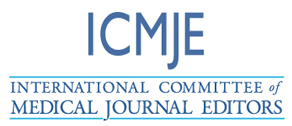Association between NT- pro BNP and Cardio-metabolic Risk Factors in Mongolians
Keywords:
NT-pro BNP, cardio-metabolic risk factor, metabolic syndromeAbstract
Objective of the study was to evaluate the association of NT-pro BNP to cardio-metabolic risk factors, including the metabolic syndrome. Research method: This study was included 194 participant s aged from 35- to 64 years, who were health checkup examinee’s and had no clinical symptoms of heart failure. Cardio-metabolic risk factors were detected by clinical examinations and laboratory test. Metabolic syndrome was defined according to the International Diabetes Federation definition. NT-pro BNP determination was performed on an immunoassay analyzer (FIA8000, Getein Bio Medical Inc). The cut-off point for NT-pro BNP was 125pg/ml. We examined with multivariate linear regression of the relationship between NT-pro BNP and cardio-metabolic risk factors. A logistic regression analysis was also performed to assess the influence of cardio-metabolic risk factors and metabolic syndrome on NT- pro BNP values. Research results: A total of 194 participants included in the study of which, 75 (38.6%) were men and 119 (61.4%) were women. The mean age was 51.3±7.9 75 years. Thirty-two participant s (16.5%) showed elevated NT-pro BNP levels of ≥125 pg/ml. Sixty-one (31.4%) participants had metabolic syndrome. Multivariate linear regression analysis showed that age (β=0.140, P=0.049), systolic blood pressure (β=0.198, P=0.007) and diastolic blood pressure (β=0.174, P=0.018) were positively correlated with NT-pro BNP levels, while body mass index (β=-0.209, P=0.004) was negatively correlated with NT-pro BNP levels. Age (OR=1.07, P=0.011) and hypertension (OR=5.98, P=0.007) were the independent predictors of elevated NT-pro BNP levels. Conclusion: NT-pro BNP levels were significantly increased in participants with hypertension and metabolic syndrome and were lower in obesity.
References
I. Brunzell JD, Davidson M, Furberg CD, et al. Lipoprotein management in patients with cardio-metabolic risk: Consensus conference report from the American Diabetes Association and the American College of Cardiology Foundation. J Am Coll Cardiol. 2008;51(15):1512-1524.
doi: 10.1016/j.jacc.2008.02.034.
II. Lavie CJ, Sharma A, Alpert MA, De Schutter A et al. Update on obesity and obesity paradox in heart failure. Prog Cardiovasc Dis. 2016; 58:393–400.
III. Beleigoli AM, Diniz MF, Ribeiro AL. Natriuretic peptides: linking heart and adipose tissue in obesity and related conditions: a systematic review. Obesity Rev. 2009, 10:617–626.
doi:10.1111/j.1467-789X.2009.00624.x.
IV. Bao Y, Shang X, Zhou L, Hu R, Li Y, Ding W. Relationship between N-terminal pro-B-type natriuretic peptide levels and metabolic syndrome. Arch Med Sci .2011, 7:247–256.
doi:10.5114/aoms.2011.22075.
V. Sugisawa T, Kishimoto I, Kokubo Y, Makino H, Miyamoto Y, Yoshimasa Y. Association of plasma B-type natriuretic peptide levels with obesity in a general urban Japanese population: The Suita Study. Endocr J. 2010; 57:727–33.
doi:10.1097/MAJ.0000000000000261.
VI. Li WY, Chiu FC, Chien YF, Lin JW, Hwang JJ. Association of amino-terminal pro-brain natriuretic peptide with metabolic syndrome. Intern Med. 2011; 50:1143–7. doi:10.2169/internalmedicine.50.4765.
VII. Madamanchi C, Alhosaini H, Sumida A, Runge MS. Obesity and natriuretic peptides, BNP and NT-pro BNP: mechanisms and diagnostic implications for heart failure. Int J Cardiol. 2014;176: 611–7. doi:10.1016/j.ijcard.2014.08.007.
VIII. William B.Kennel, Ramachadran S.Vasan, Michelle J.Keyes et al. Usefulness of the triglyceride-high-density lipoprotein versus the cholesterol-high-density lipoprotein ratio for predicting insulin resistance and cardio metabolic risk (from the Framingham Offspring Cohort). American Journal of Cardiology. 2008:101(4):497-501.
doi:10.1016/j.amjcard.2007.09.109.
IX. Shalnova S. A., Imaeva A. E., Deev A. D., Metelskaya V. A., Muromtseva G. A., Konradi A. O, et al. Elevated Level of the Natriuretic Peptide Among Adult Population in Regions Participating in the ESSE-RF Study and Its Association with Cardiovascular Diseases and Risk Factors. Kardiologiia. 2017; 57(12): 43–52.
doi:10.18087/cardio.2017.12.1006.
X. Ji-Hung Wang, Chung-Jen Lee, Jen-Che Hsieh et al. N-terminal pro-B-type natriuretic peptide level inversely associates with metabolic syndrome in elderly persons. Diabetology &Metabolic Syndrome. 2014;6:15.
http://www.dmsjournal.com/content/6/1/15
XI. Fradley MG, Larson MG, Cheng S, McCabe E, Coglianese E, Shah RV, et al. Reference limits for N-terminal-pro-B-type natriuretic peptide in healthy individuals (from the Framingham Heart Study). Am J Cardiol. 2011; 108:1341–1345.
doi: 10.1016/j.amjcard.2011.06.057.
XII. Atsushi Tanaka, Hisako Yoshida, Atsushi Kawaguchi et al. N-terminal pro-brain natriuretic peptide and associated factors in the general working population: a baseline survey of the Uranosaki cohort study. Sci Rep. 2017; 7: 5810. doi:10.1038/s41598-017-06090-6.
XIII. Wen-Hua Zhu, Li-Ying Chen, Hong-Lei Dai et al. Correlation between B type natriuretic peptide and metabolic risk factors. Arch Med Sci. 2016; 12, 2: 334–340. doi.org/10.5114/aoms.2015.57001.
XIV. Mona F Schaalan1, Walid M Mohammad, Mohammed A Hussein et al. Association of Cardiac Pro-Β-Type Natriuretic Peptide Levels with Metabolic Risk Factors in Young Obese Egyptian Patients: A Focus on Normotensive vs. Hypertensive Patients. J Diabetes Metab. 2014, 6:1. doi:10.4172/2155-6156.1000477.
XV. Stefano Baldassarre, Salvatore Fragapani, Antonio Panero et al. NT-pro BNP in insulin-resistance mediated conditions: overweight/obesity, metabolic syndrome and diabetes. The population-based Casale Monferrato Study. Cardiovascular Diabetology. 2017; 16:119. doi:10.1186/s12933-017-0601-z.











